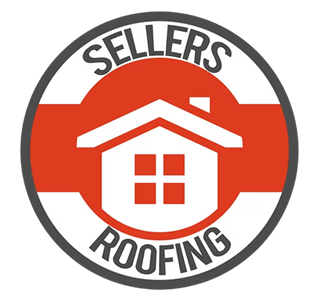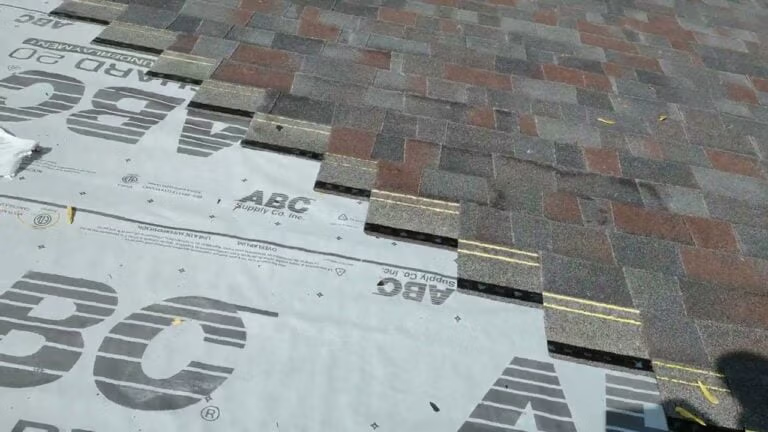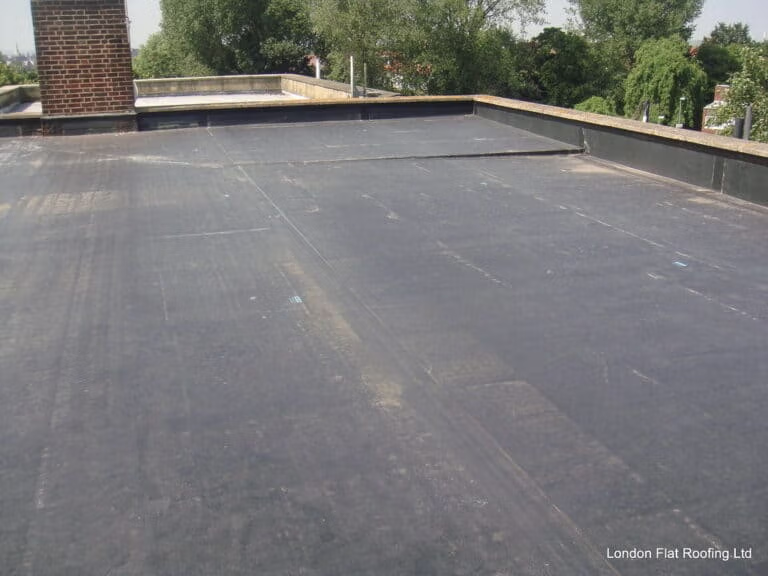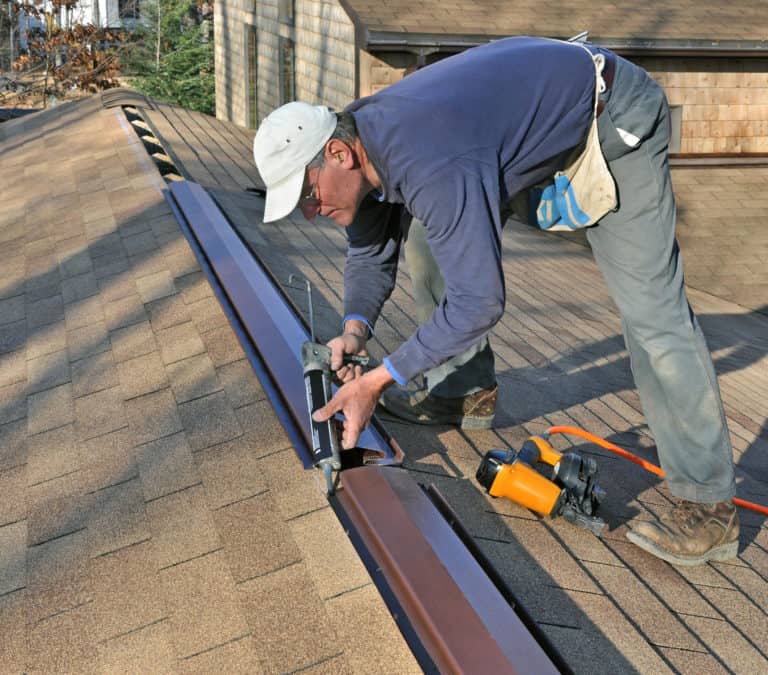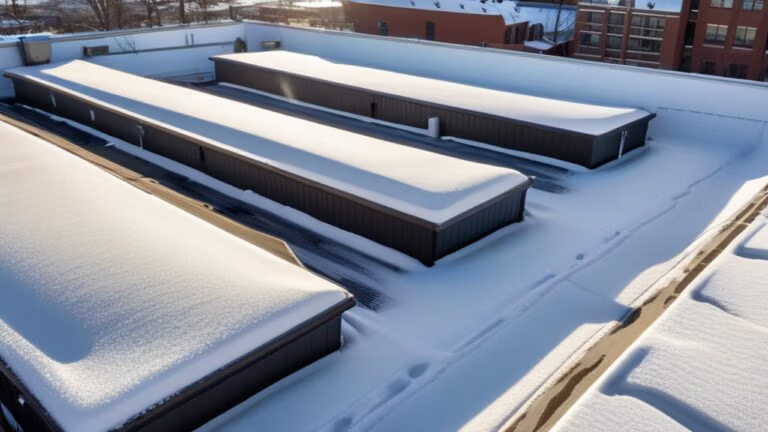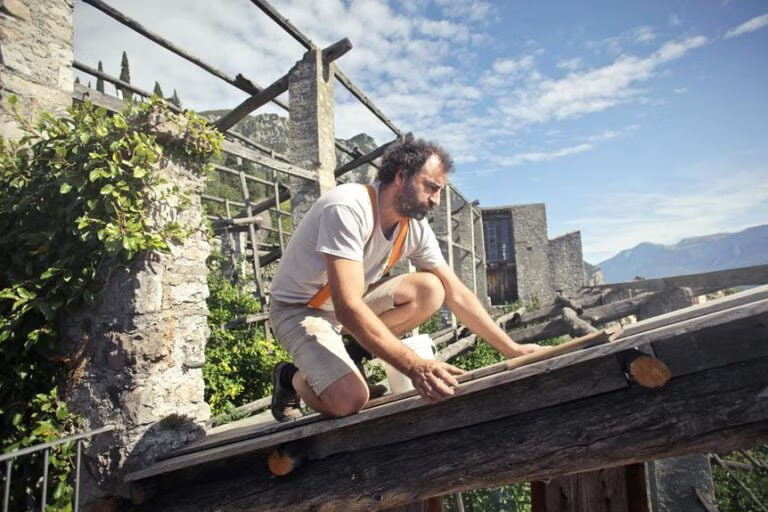Frequently Asked Questions
How to install roll roofing on a shed?
Installing roll roofing on a shed requires proper preparation, nailing techniques, and sealing seams. Start by cleaning the surface, then unroll the roofing, overlap edges, and securely nail it down, ensuring a watertight seal at all seams.
How to apply roll roofing adhesive?
Applying roll roofing adhesive involves spreading the adhesive evenly on the clean, dry surface, then immediately rolling out the roofing material and pressing it firmly into the adhesive.
Can you install roll roofing over existing roll roofing?
Yes, you can install roll roofing over existing roll roofing, but it is important to ensure the existing surface is clean, dry, and in good condition before applying the new layer.
How much does it cost to install roll roofing?
The cost to install roll roofing typically ranges from $2 to $5 per square foot, depending on the material, labor, and project complexity.
Can rolled roofing be installed vertically?
Rolled roofing can be installed vertically, though it is more commonly used for horizontal applications. Vertical installation may be necessary for certain roof designs or in specific situations, but it requires additional considerations to ensure proper sealing and water resistance.
Can you put rolled roofing over shingles?
It is generally not recommended to install rolled roofing directly over existing shingles, as this can lead to uneven surfaces and potential issues with proper adhesion and water drainage. The preferred approach is to remove the existing shingles before applying the rolled roofing.
How to install roll roofing without nails?
Roll roofing can be installed without nails by using adhesives or self-adhesive products. This method involves applying a continuous layer of adhesive to the roof surface and then rolling the roofing material onto it, creating a secure bond without the need for nails.
How to install flat roof roll?
Installing flat roof roll involves properly aligning and securing the roll to the roof surface, sealing seams, and ensuring adequate overlap between rolls to create a watertight barrier. This is typically done by using roofing nails spaced at appropriate intervals.
How to install roll roofing with nails?
Installing roll roofing with nails involves properly spacing the nails, sealing the seams between rolls, and checking for loose nails over time to ensure a secure and watertight roof.
Can roll roofing be installed over shingles?
Roll roofing can be installed over existing shingles, provided the shingle surface is clean, dry, and in good condition. This approach can save time and labor costs, but proper installation techniques are crucial to ensure a secure and long-lasting roof.
How is rolled roofing installed?
Rolled roofing is typically installed by securing the rolls with nails spaced at proper intervals, ensuring tight seams between rolls, and using adhesives or torch-down techniques to create a watertight and secure roof system.
How to install liberty roll roofing?
Installing liberty roll roofing involves properly aligning and securing the rolls, sealing seams, and ensuring adequate overlap to create a watertight roof. Proper nailing patterns and spacing are crucial for a secure installation.
How do you install roll roofing?
Roll roofing is typically installed by nailing it down, ensuring proper spacing between nails to prevent bunching. Sealing the seams where rolls meet is crucial, using adhesives, torch-down techniques, or specific overlap nailing patterns to create a watertight seal.
How to install roll roofing over shingles?
Installing roll roofing over existing shingles involves properly preparing the surface, securely fastening the roll roofing, and sealing the seams to ensure a watertight and durable roof.
How to install roll roofing over existing roll roofing?
Installing roll roofing over existing roll roofing requires proper surface preparation, overlapping seams, and secure fastening. The existing surface must be clean, dry, and free of debris. Overlap seams by at least 4 inches and secure with proper fasteners according to the manufacturer's instructions.
What tools are needed for roll roofing?
The tools needed for roll roofing installation include a utility knife, a chalk line, a roofing roller, a nail gun or hammer, roofing nails, and a seam roller or torch for sealing the seams.
How to prepare the surface for roll roofing?
Preparing the surface for roll roofing involves ensuring a clean, smooth, and dry surface. The area should be free of debris, and any uneven areas should be leveled to provide a stable foundation for the roll roofing installation.
What is the best adhesive for rolled roofing?
The best adhesive for rolled roofing is a specialized roofing adhesive designed for securing and sealing roll roofing materials. These adhesives provide a strong, long-lasting bond and are formulated to withstand the elements and maintain flexibility.
Can roll roofing be self-installed?
Roll roofing can be self-installed, but it requires careful planning, proper tools, and attention to detail. Self-installation may be challenging for those without experience, and it's essential to follow manufacturer instructions to ensure a secure and watertight roof.
How to ensure proper drainage with roll roofing?
Ensuring proper drainage with roll roofing involves strategic placement of slope, using a vapor barrier, and installing adequate downspouts to direct water away from the building's foundation.
What weather conditions are suitable for installation?
Suitable weather conditions for roll roofing installation include moderate temperatures, minimal wind, and low chances of precipitation. Extreme heat, cold, or wet weather can affect the adhesion and performance of the roofing material.
How to repair damaged roll roofing seams?
Repairing damaged roll roofing seams involves cleaning the affected area, applying a seam sealant or adhesive, and securely fastening the seam using nails or staples to restore a watertight seal.
What are the benefits of using rolled roofing?
The benefits of using rolled roofing include affordability, easy installation, and versatility. It is a cost-effective option that can be easily applied to various roof types and provides a durable, weather-resistant surface.
Is rolled roofing suitable for steep slopes?
Rolled roofing is generally not recommended for steep slopes, as it can be more prone to slippage and leaks compared to other roofing materials better suited for high-pitch applications, such as asphalt shingles or metal roofing.
How to remove old roll roofing materials?
Removing old roll roofing materials typically involves carefully peeling off the existing layer, disposing of it properly, and preparing the surface for new roofing installation.
What type of insulation works best with roll roofing?
The best type of insulation to use with roll roofing is rigid foam insulation. Rigid foam insulation is durable, provides excellent thermal performance, and is compatible with the installation process of roll roofing.
How long does rolled roofing typically last?
Rolled roofing typically lasts between 10 to 20 years, depending on factors such as climate, installation quality, and maintenance. Proper installation and regular inspections help maximize the lifespan of rolled roofing systems.
What maintenance is required for roll roofing?
The maintenance required for roll roofing includes regularly inspecting for loose nails, ensuring proper sealing of seams, and checking for any signs of wear or damage, especially after severe weather conditions.
Can you paint rolled roofing surfaces?
You can paint rolled roofing surfaces, but it's important to properly prepare the surface by cleaning and priming it first to ensure the paint adheres effectively and provides long-lasting protection.
How to maximize the lifespan of roll roofing?
Maximizing the lifespan of roll roofing can be achieved by proper installation, regular maintenance, and prompt repairs. This includes securing the roof with suitable fasteners, sealing seams, and addressing any issues like cracks or blisters promptly.
